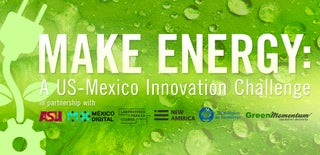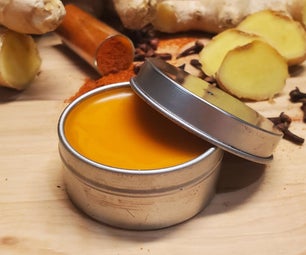Introduction: Off-the-Grid Lighting Solution (LED Moser Light Evolution)
Intro: This Instructable is about a novel evolution to an existing 'Solar Lighting' concept - originally invented by Brazilian engineer, Alfredo Moser, who's lighting invention (aka Liter of Light) has given free lighting to people in developing (and developed) countries through clever application of chemistry.
How it works:
- It does this by taking a bottle of water;
- adding a little chlorine bleach (c.20ml or 1%vol.);
- cutting a hole in the roof (often corrugated tin sheet);
- inserting the bottle half-way in and glue in place.
- The light from the sun hits the external half of the bottle;
- the light bounces around in the chlorinated water - and 'glows';
- (the chlorine changes the refractive index of clean water, 'partially trapping' the light);
- the internal half of the bottle glows with equivalent light to a typical 55W bulb.
So what's the innovation, here?
- The above only works in the daytime - this 'evolution' also works at nighttime...
- It uses LEDs to create a 'glow' in the Moser Light at night.
How it started: I was part of a team at a Power Hack Workshop looking to develop Off The [power]Grid solutions for electricity in developing countries. We loved Alfredo Moser's invention - but realised it would not work at night. So we wondered if combining it with an LED would make it a great night-light. (And you can appreciate that an evenly dispersed light in your room is nicer than a harsh, dazzling LED).
At the time when Moser developed his light c.2002, the price of LEDs were far too high for developing countries to afford - especially the super-bright kind you get today. However, with charities like Practical Action and Liter of Light exploring new opportunities with the falling price of various technology, LEDs might start to become realistic. Clearly there is lots of questions still to resolve, but I'd appreciate constructive comments from the Instructables community which might help progress this concept.
How this Instructable is set out:
PART 1: How to Make an LED Moser Light.
PART 2: Behind the Scenes: (How we arrived at this idea, and some concepts on generating the electricity (off grid) to power the LED in the first place).
- Please note this Instructable is of my own initiative, and the views expressed here are my own and do not reflect that of the companies mentioned.
- However, in the event of a win in a Contest (here's hoping - please vote!) - naturally, I would donate the winnings/prizes to the charities listed above.
- Usual H&S disclaimer: Be careful, Chlorine/Bleach is nasty stuff - it can damage eyes, skin, clothes, etc. Wear gloves, eye protection and a mask if sensitive to fumes. Read the instructions before use. I'm not responsible for any harm caused by following this Instructable.
Step 1: PART 1a: Making a LED Moser Light
You will need: 2 Ltr Bottle, Epoxy Glue, Drill, 12V Super Bright LED, wires, Battery/Solar Cell...or even your own Power Generator (see Part 2).
1. Add 2 capfuls (~20ml) Chlorine Bleach to your empty 2Ltr water bottle.
2. Fill up with Water. Stand aside and allow to mix/disperse.
3. Take your Bottle Cap. Drill a hole in the middle (wide enough to poke LED wires through).
4. Wire-up your LED* to some cable. Thread through Bottle Cap.
5. Mix up some Epoxy Glue. First glue the LED in place and spread the glue out (but not over) the 'rim'. Allow to dry. In the unlikely case that this 'rim' does not exist in your country, just take care to not go right to the edge - you will see why from the diagram.
6. Mix up some more Epoxy Glue (Super Glue will also work). Glue the other side, sealing the hole and fixing the wires in place. Allow to dry.
7. Take your 2Ltr Bottle and LED-Screw-Cap Assembly together.
Step 2: Part 1b: Installing Your LED Moser Light
continued...
8. If you are confident in your gluing/sealing - mount upside-down, if not, keep it the normal way up and it will not leak, but remember you need another hole to run your cables through the roof as well.
9. You can now your LED Moser Light in your roof the same way as illustrated in the video, or just hang it in a convenient place inside if you just want to run off battery power.
10. Finally, if you are curious to see what other ways of powering this LED we came up with read on to PART 2... *You might want to add search terms such as COB (Chip on Board) and SMD (Surface Mount Device) in your 12V LED Google-searches. Although these do get hot, they are 'cooled' by the water and are very bright.
Step 3: PART 2: Behind the Scenes: Generating Off-the-Grid Power (for Your LED Moser Light)
Electricity generators are nothing new, they convert rotary mechanical energy into electrical energy. For the Power Hack Workshop we took a Wind-Up Torch and made housing for it to function as a 'Hub' for things which would make it spin. We proposed two 'turbines' that would power this generator:
A. Using Aluminium Cans to be cut into turbine blades - for windpower.
B. Using more 2Ltr Bottle as 'scoops' or 'paddles' - for water power.
Arguably a whole range of issues remain unresolved, from the mechanical to logistical, when designing for low-cost Off-the-Grid power solutions. It will be interesting to see where this project goes. Please take a look at the video of the presentation - and feel free to give any support to this project or the charities involved.
Step 4: Appendix: Resources
Much of this workshop was done with Designers and Engineers, and it assumes a fair bit of knowledge of how to make proof of concept models. I happen to run a website dedicated to sharing knowledge on prototyping, I call it Design Modelling and you might find it useful if you wish to create any of the models you have seen here.
Best wishes,
Jude
Power Hack (RS Blog): http://www.rs-online.com/designspark/electronics/e...
Practical Action: http://practicalaction.org/energy
Liter of Light: http://www.litreoflight.co.uk/
Design Modelling (my Blog & contact details): http://www.judepullen.com/designmodelling/electric...
How to make waterproof prototypes out of Correx: https://www.instructables.com/id/Make-Waterproof-Pr...
Update: Moser Related Instructable (woo!): https://www.instructables.com/id/Day-and-Night-Time...

Fourth Prize in the
MAKE ENERGY: A US-Mexico Innovation Challenge

Participated in the
Make it Glow!













